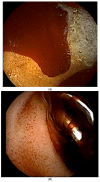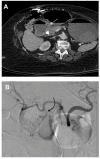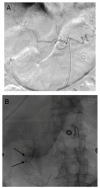Gastrodoudenal Embolization: Indications, Technical Pearls, and Outcomes
- PMID: 29724061
- PMCID: PMC5977140
- DOI: 10.3390/jcm7050101
Gastrodoudenal Embolization: Indications, Technical Pearls, and Outcomes
Abstract
The gastroduodenal artery (GDA) is frequently embolized in cases of upper GI bleed that has failed endoscopic therapy. Additionally, it may be done for GDA pseudoaneurysms or as an adjunctive procedure prior to Yttrim-90 (Y90) treatment of hepatic tumors. This clinical review will summarize anatomy and embryology of the GDA, indications, outcomes and complications of GDA embolization.
Keywords: gastroduodenal artery; pseudoaneurysm; upper GI bleed embolization.
Conflict of interest statement
The authors declare no conflict of interest.
Figures














References
-
- Som P., Grapin-Botton A. The Current Embryology of the Foregut and Its Derivatives. Neurographics. 2016;6:43–63. doi: 10.3174/ng.1160142. - DOI
Publication types
LinkOut - more resources
Full Text Sources
Other Literature Sources

